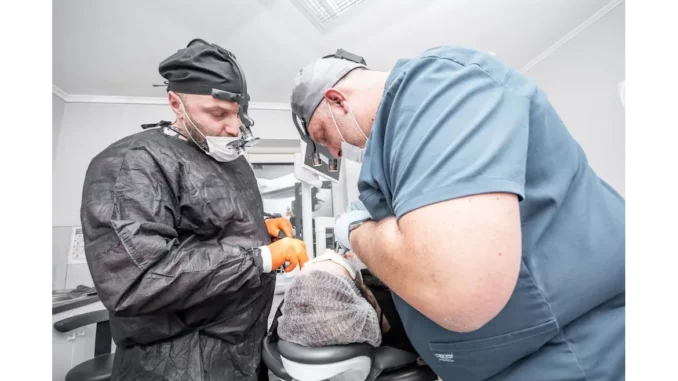
In recent years, dental implantology has undergone a transformative evolution with the integration of robotic artificial intelligence (AI), ushering in a new era for periodontology and implant surgery. The shift from conventional freehand techniques to cutting-edge technological solutions is reshaping the landscape of dental care. Central to this transformation are dynamic navigation and haptic robotic systems, notably the X-Guide and Yomi, which are enhancing the precision of implant placement, particularly in the complex and sensitive maxillofacial region. This article explores the impact of these robotic systems on dental implantology, examining their myriad advantages, inherent challenges, and future potential.
For decades, dental implant placement relied heavily on the practitioner’s skill and experience, with freehand techniques being the norm. Unfortunately, this approach often resulted in higher rates of inaccuracies, with studies showing a significantly greater error rate in freehand surgeries compared to those assisted by robotics. The advent of robotic AI systems has addressed these challenges by offering enhanced precision and accuracy. The X-Guide dynamic navigation system and Yomi robotics have emerged as leaders in this technological revolution, utilising advanced imaging and real-time feedback to guide practitioners during implant placement. Remarkably, these systems achieve mean deviations of no more than 1 mm from pre-planned positions, a level of precision that is critical in avoiding vital structures such as nerves and blood vessels, particularly in the intricate maxillofacial region.
The primary advantage of incorporating robotic AI systems in dental implantology is the substantial improvement in surgical outcomes. By minimising the margin of error, these systems significantly enhance the overall success rate of implant surgeries, particularly in complex cases where precision is imperative. Additionally, robotic systems support minimally invasive procedures, potentially leading to faster recovery times and reduced postoperative complications for patients. The integration of AI in these systems also facilitates continuous learning and adaptation, as the algorithms driving these technologies become more refined with the accumulation and analysis of more data, further enhancing their accuracy and efficiency.
Despite the numerous benefits, the adoption of robotic AI in dental implantology is not without its challenges. One of the primary obstacles is the considerable expense associated with these advanced technologies. The initial investment required to acquire and implement robotic systems can be prohibitive for many practitioners, particularly those operating smaller practices. Furthermore, there is a learning curve involved in transitioning from traditional methods to robotic-assisted techniques. Practitioners must undergo specialised training to effectively utilise these systems, which can be both time-consuming and resource-intensive.
While the current focus of robotic AI in dentistry predominantly centres on implantology, its applications are swiftly expanding into other areas such as endodontics and orthodontics. The capacity to perform complex procedures with minimal deviations opens new possibilities for dental practitioners, enabling more comprehensive treatment plans and improved patient outcomes. Looking towards the future, the continued development of AI and robotics in dentistry holds the promise of even greater advancements. As these technologies become more accessible and affordable, their widespread adoption could revolutionise dental care, offering patients safer, more efficient, and more effective treatment options.
The integration of robotic AI in dental implantology represents a pivotal milestone in the evolution of dental practices. While challenges remain, the potential benefits of these technologies are undeniable, paving the way for a new era of precision and innovation in dental care. The journey towards widespread adoption of robotic systems in dentistry is ongoing, yet the trajectory is clear: AI and robotics are set to redefine the standards of dental treatment, ensuring enhanced accuracy, efficiency, and patient satisfaction. As the dental profession continues to embrace these advancements, the future of dental care looks increasingly promising, with robotic AI at the forefront of this transformative evolution.


Be the first to comment